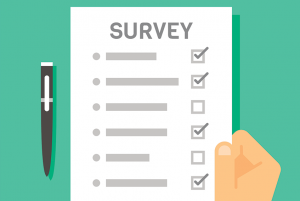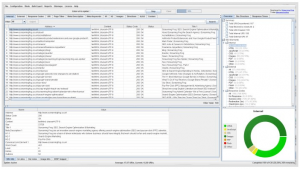
There is—or at least used to be—many reasons to redesign your business website.
To keep up with design trends. To stay ahead of the competition. To drive results and improve customer experience. To uphold an annual redesign schedule. Or maybe even just for the heck of it.
Hidden within those answers are both good and not-so-good reasons for creating and implementing a new design, and everything in between. It might seem like “new is always better,” but that’s only true if your website redesign is aligned with your business goals and with how you’re looking to serve your customers.
Redesigning without a strategy can be risky. Let’s take a closer look at why traditional website redesign is flawed.
Figuring Out Your Redesign Strategy
Does your company have a marketing strategy? Of course it does! What about a redesign strategy? Maybe? No?
Traditional methods suggest that a design refresh every couple of years is just a part of doing business online. A fresh redesign was completed like clockwork, be it every year or every five years. And regular visitors would be excited to see the new design, and it gave them a reason to come back to the site.
The part that a lot of businesses hadn’t really thought about was how to evolve. They might have changed the wrapping of the website, leaving the inside untouched. And that usually meant a static website. Not one that changed and shifted and transformed because of new developments in technology, but one that stayed the same, like a business card or a brochure.
Many tools can help with testing, tracking and measuring how a website is performing. These methods can assist with making informed decisions about your website:
- Monitoring Google Analytics to determine what devices your visitors are using to view your website (smartphone, tablet, desktop).
- Using tools like CrazyEgg or Hotjar to track sessions and generate heat maps to monitor visitor behavior.
- A/B split testing tools like HubSpot to determine the effectiveness of certain colors, headlines and copy.
- Researching keywords on Google Keyword Planner to create content around customer interests.
Gathering data and making informed decisions is what enables a business to improve conversions and boost sales.
That’s exciting because it means you can focus on getting better and meeting—even exceeding—customer expectations.
Opportunities and Risks of Redesigning a Website
A website redesign presents both opportunities and risks.
A traditional, holistic redesign process involved change on a broad scale—template, layout, font choice, graphics, colors, imagery, headlines, navigation and more. These are all good things to be thinking about and updating as necessary, as long as you have solid data to back up your decisions.
The opportunity of web design is that you’ll get more opt-ins, generate more leads and produce more sales. This is what we all ultimately want.
The risk, then, is the opposite: Taking on a big redesign project only to get the exact results you’re already getting—or maybe worse.
For instance, 61 percent of people have a better opinion of brands when they offer a good mobile experience. So we know that mobile optimization is important, and something that should be a part of your redesign strategy if it isn’t already.
A redesign is good, even necessary, when it is backed by solid data. If you’re making a shift to better serve your target customer, you’re doing the right thing. But if you’re redesigning just to give your site a facelift, you could be shirking a major opportunity for growth.
The Importance of Testing and Adapting
As we noted earlier, modern technology allows us to test many different aspects of a website and prove how effective its design is. We can learn what people are clicking on, what pages are getting the most views, keywords to build content around, and even minute details like the best color for a call-to-action button.
This testing allows us to make micro-shifts that can make a significant difference. Seemingly trivial details can actually turn out to be major if they boost conversions by even 1 percent. And this is the preferred approach to redesign. “Redesign” might not even be the right word because you want to create an infrastructure that allows for continuous improvement.
Since technology and best practices are shifting fast, the best way to keep up is to not keep up— or rather, adopt a mindset that allows for micro-changes that help you to stay relevant and competitive in the marketplace.
An Evolutionary Approach to Redesign
To summarize, instead of doing a site-wide static redesign every couple of years, the better approach is to monitor visitor behavior and make just-in-time changes based on testing.
In this way, your site will never be outdated because you’ll be making informed decisions about it on a day-to-day, week-to-week, month-to-month and year-to-year basis
The primary question of traditional redesign was, “How do we make sure our website looks up-to-date?” Not a bad question, but there are some equally important questions to be asking as you look to create a high-performing website.
Here are a few:
- How can you provide your visitors with a better user experience across all devices?
- How can you test assumptions and make a more data-driven approach to website evolution?
- Who is your customer? What buyer personas are you trying to attract? Can you segment them and create content for each?
- What are your customers searching for, and how can you provide valuable content to attract and educate them?
Final Thoughts
Do traditional website redesign practices still work? They can, at least to a lesser degree, but a cyclic redesign model doesn’t allow for the kind of ongoing improvement we’ve been talking about.
If you haven’t already, embrace a methodology of tracking, measuring, testing and constant improvement. The effort is worth it because you will create a better experience for your target customer, and that will lead to increased engagement, opt-ins, conversions and sales.
No matter how many best practices you incorporate into your website redesign, set-it-and-forget-it no longer works. The new course for your online presence is to create websites that are scalable and capable of adapting based on actual user engagement. Discover the seven elements of high-performing websites in this forward-thinking eBook.
Digital & Social Articles on Business 2 Community(73)
Report Post






